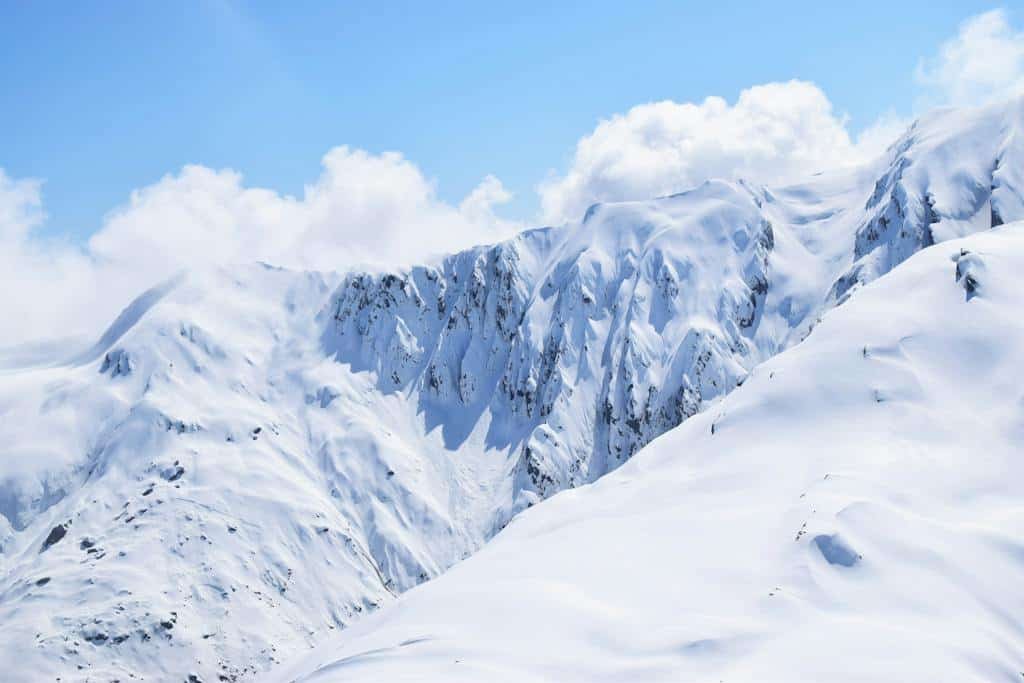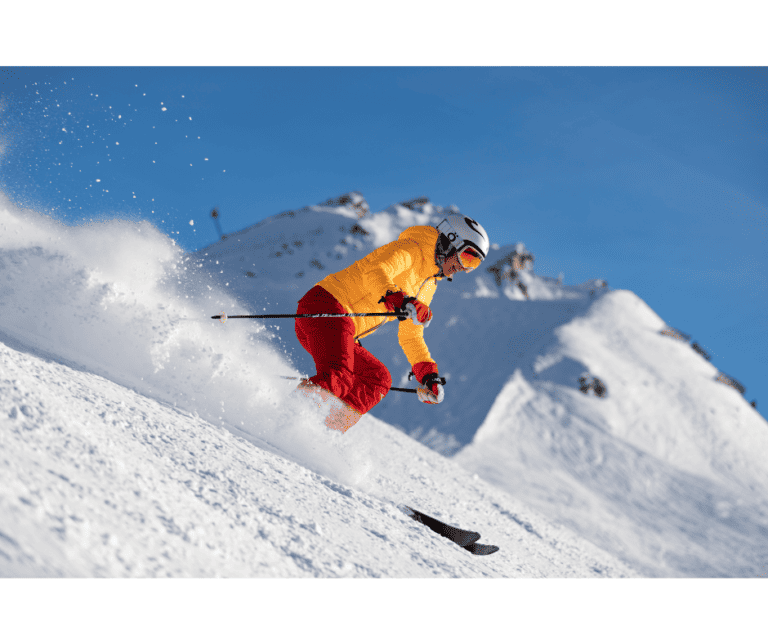How to Dress for Backcountry Skiing

Backcountry skiing offers a unique experience that allows you to explore untouched slopes and breathtaking landscapes. However, to fully enjoy this adventurous activity, it’s crucial to dress appropriately and layer your clothing effectively. By understanding the basics of dressing for backcountry skiing and the importance of layering, you can stay comfortable, safe, and prepared for the elements.
Understanding the Basics of Dressing for Backcountry Skiing

When it comes to backcountry skiing, dressing properly is essential. Layering your clothing allows you to regulate your body temperature and adapt to changing weather conditions. The three main layers you need to consider are base layers, mid-layers, and outer layers.
Base layers are the foundation of your backcountry skiing outfit. They are designed to wick moisture away from your skin, keeping you dry and comfortable during physical activity. Look for base layers made of merino wool or synthetic materials that offer moisture-wicking properties.
Mid-layers provide insulation and help retain heat close to your body. Fleece jackets, down vests, or synthetic insulated jackets are popular choices for mid-layers. These garments trap warm air while still allowing moisture to escape, keeping you warm and dry throughout your ski tour.
The Importance of Layering
Layering is key to backcountry skiing because it helps manage moisture, provides insulation, and allows for easy adaptation to changing temperatures. Each layer serves a specific purpose and contributes to your overall comfort and performance.
Outer layers are your first line of defense against the elements. Waterproof and windproof jackets and pants are essential for backcountry skiing, especially when braving harsh weather conditions. Look for outer layers with ventilation zippers to help regulate your body temperature during strenuous ascents.
Dressing for the Weather Conditions
One of the most important factors to consider when dressing for backcountry skiing is the weather conditions. Whether you’re skiing in cold temperatures, facing strong winds, or dealing with unpredictable weather, your clothing choices will play a significant role in your comfort and safety.
Accessories such as gloves, hats, and neck gaiters are also crucial for staying warm and protected while backcountry skiing. Opt for moisture-wicking and quick-drying materials to keep sweat at bay and prevent heat loss. Additionally, don’t forget to wear sunscreen and UV-protective eyewear to shield your skin and eyes from the sun’s harmful rays, which can be intensified at higher altitudes.
Essential Clothing Items for Backcountry Skiing
In order to dress and layer effectively for backcountry skiing, there are several essential clothing items you should have in your gear arsenal.
When embarking on a backcountry skiing adventure, it’s crucial to not only have the right gear but also to understand the importance of layering for comfort and safety in variable mountain conditions. Proper layering not only keeps you warm and dry but also allows you to easily adjust your clothing to regulate body temperature as you exert yourself on the slopes.
Choosing the Right Base Layers
Base layers are the foundation of your backcountry skiing attire. They are designed to keep you dry by wicking away moisture from your skin. Look for base layers made from moisture-wicking materials such as merino wool or synthetic fabrics like polyester.
Merino wool base layers are known for their natural moisture-wicking properties and ability to regulate body temperature, making them a popular choice among backcountry skiers. Synthetic fabrics like polyester are also excellent at moisture management and quick-drying, ideal for high-intensity activities in cold environments.
The Role of Mid-Layers in Insulation
Mid-layers provide insulation and help regulate your body temperature. Consider wearing fleece or synthetic insulated jackets as mid-layers. These materials provide warmth while remaining breathable.
Fleece mid-layers are lightweight, breathable, and offer excellent insulation, making them versatile for various weather conditions. Synthetic insulated jackets, on the other hand, provide warmth even when wet, a crucial feature in unpredictable mountain weather.
Selecting an Appropriate Outer Layer
Your outer layer, usually a shell or ski jacket, protects you from wind, snow, and rain. Look for waterproof and breathable options to shield yourself from the elements without trapping moisture.
When choosing an outer layer for backcountry skiing, opt for a jacket with features like adjustable hoods, pit zips for ventilation, and waterproof zippers to enhance protection against harsh weather conditions. Additionally, consider the jacket’s fit and compatibility with your other layers to ensure freedom of movement and maximum comfort during your ski tour.
Material Considerations for Ski Clothing
Understanding the different materials used in ski clothing can help you make informed decisions when selecting your gear.
When it comes to ski clothing, the choice of materials plays a crucial role in your comfort and performance on the slopes. Each material offers unique benefits that cater to specific needs and conditions, ensuring that you stay warm, dry, and comfortable throughout your skiing adventures.
The Benefits of Synthetic Materials
Synthetic materials like polyester and nylon are popular choices for ski clothing due to their moisture-wicking properties and quick-drying capabilities. They are also lightweight and durable, making them ideal for backcountry skiing. Additionally, these materials are often treated with water-repellent finishes to enhance their performance in wet and snowy conditions, keeping you dry and comfortable all day long.
Another advantage of synthetic materials is their versatility. They can be engineered to provide different levels of insulation and breathability, allowing you to customize your layering system based on the intensity of your activity and the weather conditions. Whether you’re skiing in mild spring temperatures or braving freezing winds in the mountains, synthetic materials offer reliable protection and comfort.
When to Choose Wool or Down
Wool and down are excellent options for insulation. Merino wool provides warmth even when damp and has natural antibacterial properties that help manage odor. Its soft and itch-free fibers make it a comfortable choice for base layers or mid-layers, regulating your body temperature and keeping you cozy throughout the day. On the other hand, down insulation offers an exceptional warmth-to-weight ratio, making it ideal for extremely cold conditions where lightweight and compressible insulation is essential. The lofty clusters of down trap heat effectively, creating a cozy microclimate around your body without adding bulk to your ski attire.
Dressing for Safety in the Backcountry
While dressing for comfort is crucial, safety should not be overlooked when backcountry skiing.
When venturing into the backcountry for a skiing adventure, it’s important to consider not only your comfort but also your safety. Proper attire can make a significant difference in how well you are protected from the elements and potential risks that come with skiing in remote areas.
Visibility and Ski Clothing
Choosing clothing with bright colors or reflective elements increases your visibility to others on the mountain, including fellow skiers and rescue teams. This enhances safety, especially in areas with limited visibility or during emergency situations.
Opting for clothing with high visibility colors like neon yellows, oranges, or greens can help you stand out against the white snow, making it easier for others to spot you in case of an accident or if you get separated from your group. Additionally, garments with reflective elements can catch the light and make you more visible even in low-light conditions, such as early morning or late afternoon.
Protective Gear for Skiing
In addition to proper clothing, don’t forget to wear a helmet, goggles, and gloves or mittens to protect yourself from head injuries, snow glare, and frostbite. These items are essential for your safety on the slopes.
A helmet is a crucial piece of protective gear that can prevent serious head injuries in case of falls or collisions. Goggles not only shield your eyes from snow glare and harmful UV rays but also improve visibility by reducing glare and enhancing contrast. Proper gloves or mittens are essential for keeping your hands warm and protected from frostbite, ensuring you can maintain dexterity and control while skiing in challenging conditions.
Maintaining Comfort While Skiing
Staying comfortable while skiing is important to make the most of your backcountry experience. The crisp mountain air, the sound of skis gliding over fresh powder, and the stunning views all contribute to an unforgettable adventure in the great outdoors.
When embarking on a backcountry skiing trip, it’s not just about the thrill of the descent but also about ensuring your comfort and safety throughout the journey. Proper preparation and attention to detail can make all the difference in your overall experience.
Managing Sweat and Moisture
As you exert energy and sweat, managing moisture becomes crucial for staying warm and comfortable. Choose moisture-wicking base layers and carry extra clothing to change into if needed. Keeping dry is essential not only for comfort but also for preventing hypothermia in cold and snowy conditions.
Additionally, consider investing in high-quality merino wool socks to keep your feet dry and blister-free. Wet and cold feet can quickly ruin a day of skiing, so taking care of this often-overlooked detail can greatly enhance your enjoyment on the slopes.
Adjusting Layers Throughout the Day
Weather conditions in the backcountry can change rapidly, so it’s essential to be prepared and adaptable. Allow yourself the flexibility to add or remove layers as needed to maintain comfort throughout your skiing adventure. A versatile clothing system that allows you to regulate your body temperature will ensure that you can focus on the thrill of skiing without being distracted by discomfort.
Remember to pack a lightweight and packable down jacket in your backpack. This versatile piece of outerwear can provide extra warmth during rest breaks or sudden temperature drops, ensuring that you stay cozy and comfortable no matter what the weather brings.
By understanding the basics of dressing for backcountry skiing, selecting the right clothing materials, and considering safety and comfort, you can optimize your skiing experience in the breathtaking backcountry landscapes. With proper layers and appropriate gear, you’ll be ready to tackle any challenge and enjoy the exhilarating freedom of backcountry skiing.






